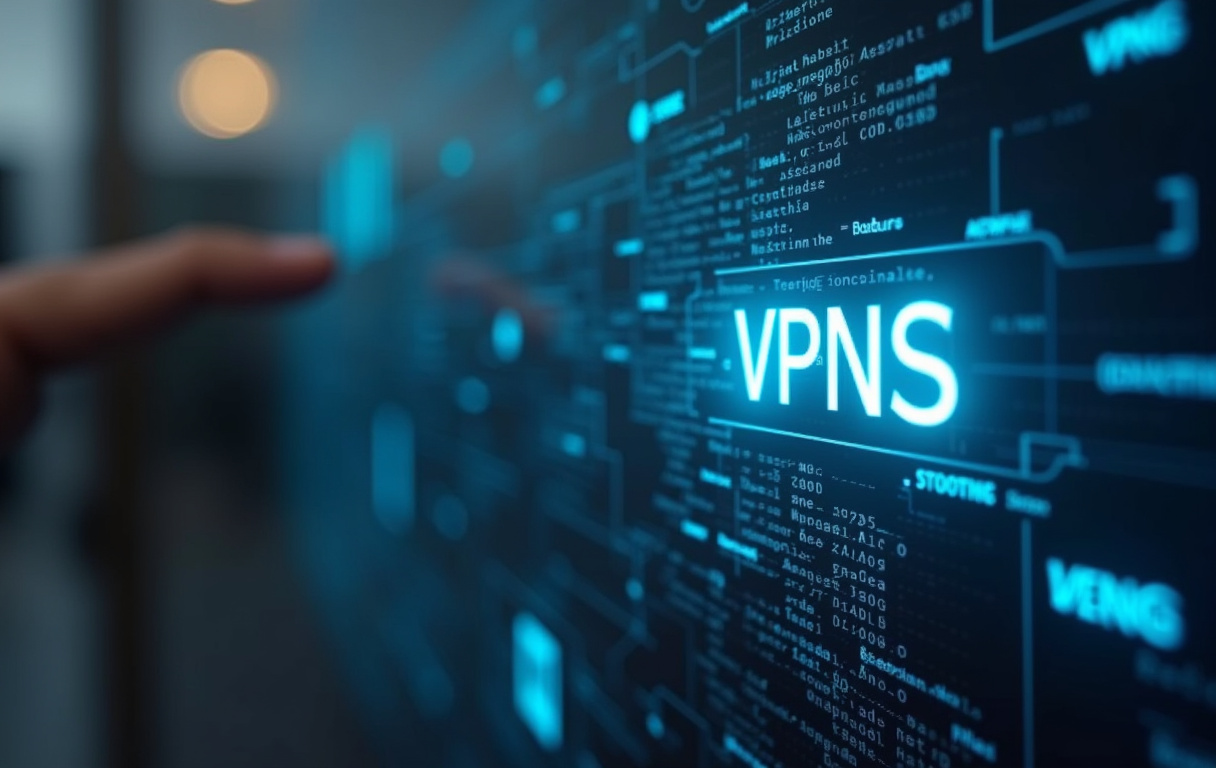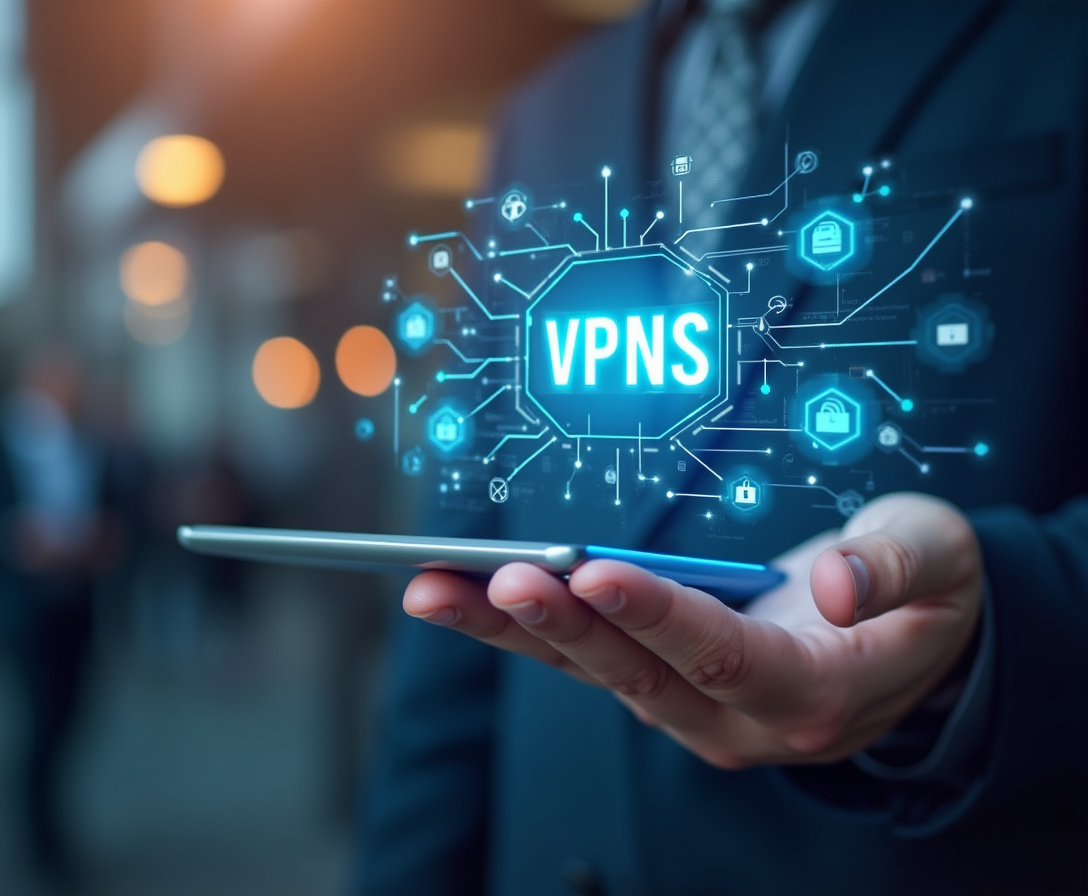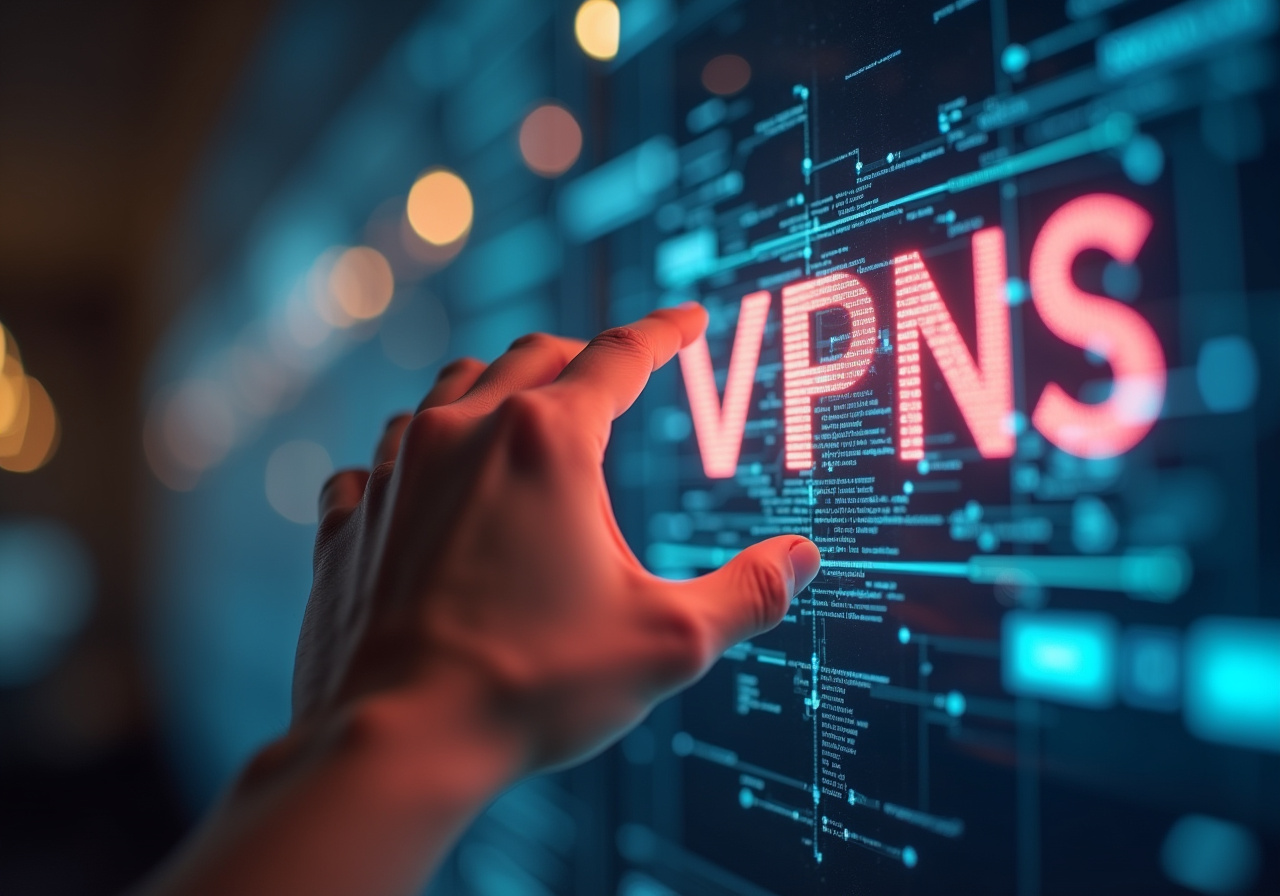VPNs for Photography Collectives: Safeguarding Image Libraries

Table of Contents
photography VPN
In today's interconnected world, photography collectives stand as vibrant hubs of creativity, diligently amassing invaluable image libraries that represent years of artistic vision and often substantial financial investment. However, this digital landscape also presents significant challenges, particularly in safeguarding these assets from an increasingly sophisticated array of cyber threats. Image libraries, with their high-resolution images, metadata, and associated documentation, have become prime targets for malicious actors seeking to exploit vulnerabilities for financial gain, competitive advantage, or even artistic sabotage.
Furthermore, the very nature of collaborative work within photography collectives, where multiple artists routinely access, modify, and share files, introduces another layer of complexity to the security equation. Protecting such sensitive information demands robust and comprehensive security protocols, and a Virtual Private Network (VPN) has emerged as a critical and indispensable tool in this defensive arsenal. This article delves into the crucial role VPNs play for photography collectives in securing their image libraries, exploring how these technologies ensure data integrity, promote secure collaboration, and mitigate the risks posed by a constantly evolving threat landscape.
At its core, a VPN operates by establishing a secure, encrypted tunnel between a user's device and a remote server. This seemingly simple mechanism provides two fundamental layers of security that are particularly relevant to the needs of photography collectives. First, it masks the user's actual IP address, effectively anonymizing their online activity.
This is crucial in preventing eavesdropping and tracking, as it becomes exceedingly difficult to trace online actions back to the individual or the collective. Second, and perhaps even more importantly, a VPN encrypts all data transmitted through the tunnel. This encryption scrambles the information into an unreadable format, making it virtually impossible for unauthorized parties to intercept and decipher sensitive data, even if they gain access to the network traffic.
For photography collectives, this translates directly into safeguarding high-resolution images, sensitive metadata like copyright information and location data, and other critical documentation associated with their artistic output. Beyond simple data encryption, a VPN offers an enhanced layer of anonymity that extends far beyond merely hiding your location. This anonymity is particularly vital in an era where privacy breaches are becoming increasingly commonplace and sophisticated.
For photographers, this anonymity can proactively protect them from a range of threats, including but not limited to copyright infringement, unauthorized use of their work, and even industrial espionage, particularly if the collective is involved in specialized or cutting-edge projects that attract attention. Imagine a scenario where photographers within a collective are traveling to different locations, frequently relying on public Wi-Fi hotspots in airports, cafes, or hotels to upload and download images from the central library. Unfortunately, these public networks are notoriously insecure, leaving data vulnerable to interception, eavesdropping, and outright theft.
A becomes an indispensable tool in such situations, providing a secure and reliable tunnel to protect data transmission regardless of the perceived security of the network being used. The end result is a consistently robust security shield for the collective's invaluable intellectual property, offering protection even in the most vulnerable and uncontrolled network environments. Furthermore, a greatly facilitates secure and seamless remote collaboration.
Photographers are empowered to access and share files from virtually anywhere in the world, without having to compromise the overall security of the master image library. The encryption ensures that only authorized members within the collective can access, view, and modify data, effectively preserving and significantly mitigating the risk of unauthorized alterations, accidental corruptions, or malicious tampering. The significance of this cannot be overstated in today's increasingly globalized and distributed creative workflows, empowering geographically dispersed teams to work seamlessly together while consistently upholding stringent security standards and maintaining control over their valuable assets.
The use of a VPN helps foster a collaborative environment without sacrificing essential security considerations.
image library security
Beyond the fundamental security benefits of encryption and anonymity, a VPN plays a vital and often overlooked role in maintaining robust and facilitating responsible data management practices within a photography collective. Consider, for a moment, the multifaceted legal and ethical implications that arise from potential data breaches. It's not simply a matter of inconvenience; a breach can rapidly escalate into a severe crisis.
Not only can it result in the permanent loss or irreversible theft of valuable creative assets accumulated over years of work, but it can also trigger significant financial and reputational damage that can take years to rebuild from. Imagine the consequences of copyright infringement lawsuits stemming from leaked images, the potential loss of client trust following a security incident, and the overarching decline in overall credibility that invariably accompanies a public data breach. A VPN, when used in conjunction with other robust security protocols and proactive measures, can considerably minimize these risks and provide a significant layer of defense against such devastating consequences.
Crucially, the particular choice of VPN protocol utilized is a vital consideration that directly impacts the ultimate level of security achieved. Different protocols offer varying degrees of security and speed, and fully understanding these subtle but important differences is essential for optimal application within a photography collective aiming to protect its image library. Generally, OpenVPN and IKEv2/IPsec are regarded as being consistently among the most secure protocols currently available.
They offer robust encryption algorithms, reliable performance, and often boast a history of withstanding various security audits and vulnerability assessments. While older protocols such as PPTP might offer faster speeds in certain situations, their known and well-documented security vulnerabilities make them entirely unsuitable for handling highly sensitive image data and other confidential information. Therefore, prioritizing robust security over maximizing speed when selecting a VPN option becomes paramount, particularly when you are entrusted with the care and safeguarding of a vast and highly valuable image library that represents the collective's lifeblood.
Furthermore, the meticulous implementation of a strong and comprehensive password policy, coupled with the mandatory use of multi-factor authentication (MFA) across all accounts and devices, adds an absolutely essential extra layer of security that complements the protection offered by a VPN. Weak or easily guessed passwords are, in effect, an open and uninvited invitation for attackers to gain unauthorized access, and enabling multi-factor authentication makes it considerably more difficult for malicious individuals to access sensitive resources, even if they somehow manage to successfully compromise a password through phishing or other illicit means This dual-layered approach, combining strong authentication practices with the secure encrypted tunnel provided by a well-configured VPN, greatly enhances the overall security posture of the collective and significantly reduces the likelihood of unauthorized access and potential data breaches. Effective and proactive data management also demands regular and thorough security audits and vulnerability assessments to identify and address potential weaknesses before they can be exploited.
Regularly checking the VPN configuration, meticulously reviewing user access logs for suspicious activity, and promptly patching any software vulnerabilities in the VPN client and server are all critical steps in maintaining a consistently resolute security posture. These careful audits help identify potential weaknesses that might be inadvertently introduced and ensure that the VPN and all other security measures are working correctly and providing the intended level of protection Moreover, ongoing and comprehensive staff training on responsible VPN usage and general cybersecurity awareness is fundamentally crucial for a healthy security environment. Educating all members of the photography collective about the genuine risks associated with increasingly sophisticated phishing attacks, social engineering ploys, and other common cyber threats is essential to effectively preventing human error, which often represents the weakest and most vulnerable link in even the most robust security system.
Equipping photographers with the specialized knowledge and the practical skills to promptly identify and effectively avoid these subtle but dangerous threats is hugely important in strengthening the overall security posture of the collective.
creative asset protection
The concept of within a photography collective extends far beyond simply preventing unauthorized external access. It also fundamentally encompasses ensuring the ongoing and consistent availability of the image library while maintaining operational continuity; this is an area where a VPN contributes significantly, albeit often indirectly. Regular and reliable data backups, for example, form a cornerstone of any comprehensive data protection and business continuity strategy.
These backups should be stored securely, optimally on encrypted storage devices isolated from the primary network or within a secure cloud environment employing robust access controls. A VPN can be strategically utilized to establish a secure and encrypted connection during the backup process, thereby safeguarding the data as it is transferred to the designated offsite storage location. This added layer of security is particularly vital when backing up to cloud storage providers, where data traverses public networks and is potentially vulnerable to interception.
Implementing this strategy ensures backup processes are as safe as possible. In the unfortunate event of a hardware failure, unexpected data corruption, a debilitating natural disaster, or a sophisticated and malicious cyberattack, having readily accessible and reliable backups ensures that the photography collective can swiftly recover its complete image library and promptly resume normal operations with minimal disruption. Without robust backup and recovery procedures in place, a single adverse event could potentially result in the permanent loss of irreplaceable creative assets, potentially jeopardizing the collective's entire existence.
Therefore, diligent data backups should be an integral component of a comprehensive data protection plan. When embarking on the selection of a , it is paramount to choose a provider that maintains and rigorously enforces a strict no-logs policy across its entire network infrastructure. This crucial policy means that the provider unequivocally does not collect, monitor, or store any potentially sensitive information about the user's online activity, including personally identifiable information (PII), browsing history, connection timestamps, originating IP addresses, or details of data usage patterns.
A well-defined and transparently implemented no-logs policy provides an essential and extremely valuable added layer of privacy and security, ensuring that even if the VPN provider is somehow compromised or subjected to legal pressure, there is fundamentally no stored user data to be exposed, seized, or analyzed. Moreover, the physical geographic location of the VPN servers can also be a relevant factor to carefully consider, although its importance can vary significantly depending on specific threat models and individual privacy requirements. Certain countries have significantly stricter and more comprehensive data privacy laws and regulations than others, and strategically choosing a VPN provider with a substantial presence of servers located within a privacy-respecting jurisdiction, such as Switzerland or Iceland, can offer robust additional protection against government surveillance and intrusive data collection practices.
However, strategically selecting a server location that is consistently geographically distant from the user's location can detrimentally impact network performance and reduce available bandwidth, leading to potentially slower connection speeds. Therefore, a well-informed balance must be judiciously struck between prioritizing strong security measures and maintaining acceptable network performance in order to ensure a usable and effective VPN experience. A , when seamlessly integrated with other well-established and thoughtfully implemented security measures, becomes a remarkably powerful tool for ensuring the long-term security, uninterrupted availability, and sustained integrity of a photography collective's irreplaceable image library.
The encrypted secure tunnel protects sensitive data during transmission across potentially insecure networks, the robust anonymity shields against unauthorized access attempts and constant monitoring, and the layered encryption ensures that only authorized members within the collective can legitimately view, modify, and manage the extremely valuable creative assets. This holistic approach elevates the overall security posture and helps create a robust defense.
VPN for artists
To fully leverage a and bolster , a photography collective must move beyond simply subscribing to a service and actively integrate the VPN into its daily workflows and overall security strategy. This means establishing clear guidelines for VPN usage, educating all members on best practices, and consistently monitoring adherence to these policies. For instance, a policy could stipulate that the VPN must be active whenever accessing the image library remotely, particularly when using public Wi-Fi.
It should also outline the acceptable use of VPN servers, discouraging the use of servers in countries with known surveillance programs or weak data protection laws. Furthermore, the collective should regularly review and update its VPN configuration to ensure it remains optimized for security and performance. This includes selecting the most secure VPN protocol available (such as OpenVPN or IKEv2/IPsec), choosing strong encryption ciphers, and enabling features like a kill switch, which automatically disconnects the internet connection if the VPN connection drops, preventing unencrypted data from being transmitted.
Routine audits of VPN logs (if the provider allows access and if it aligns with their no-logs policy) can help identify suspicious activity or potential security breaches. Beyond the technical aspects, fostering a culture of security awareness within the collective is paramount. This involves educating photographers on common cybersecurity threats like phishing, malware, and social engineering, and training them to recognize and avoid these attacks.
Regular security awareness training sessions can help reinforce best practices and keep members informed about the latest threats. Simulating phishing attacks can also be an effective way to test employees' vigilance and identify areas where additional training is needed. The collaborative nature of photography collectives presents unique challenges and opportunities for enhancing .
By establishing clear roles and responsibilities for data security, the collective can ensure that everyone is accountable for safeguarding the image library. This includes designating individuals responsible for managing VPN accounts, monitoring security logs, and responding to security incidents. Encouraging open communication and collaboration on security issues can also help identify potential vulnerabilities and develop innovative solutions.
For example, the collective could create a dedicated channel for reporting security concerns or sharing tips on avoiding phishing attacks. Integrating the VPN with other security tools and practices further enhances overall protection. This includes using strong passwords and multi-factor authentication for all accounts, implementing firewalls to control network traffic, and installing anti-malware software on all devices used to access the image library.
Regular software updates are crucial for patching security vulnerabilities and preventing attackers from exploiting known weaknesses. Furthermore, the collective should consider implementing a data loss prevention (DLP) solution to prevent sensitive images or metadata from being accidentally or intentionally leaked outside of the organization. A well-configured DLP system can automatically detect and block unauthorized data transfers, such as emailing images to personal accounts or uploading them to public cloud storage services.
By layering multiple security measures, the collective can create a robust defense against a wide range of threats. This multi-faceted, yet centralized approach to management greatly enhances the protection of a collective's image resources.
photography VPN
In conclusion, safeguarding image libraries within photography collectives demands a multi-layered approach, with a serving as a foundational element. While VPNs provide crucial encryption and anonymity, they are most effective when integrated into a broader security ecosystem that encompasses strong passwords, multi-factor authentication, regular security audits, employee training, and proactive data management practices. The specific benefits realized by a collective will depend on factors such as its size, collaborative workflows, and the sensitivity of its images, but the core principles of data protection remain universal.
Choosing the right necessitates careful consideration of several factors, including security protocols, server locations, logging policies, and ease of use. Prioritizing security and privacy over speed is generally advisable, especially when dealing with high-resolution images and sensitive metadata. Opting for a VPN provider with a proven track record of security and transparency is also crucial.
Reading independent reviews and consulting with cybersecurity experts can help inform this decision. Moreover, it's essential to recognize that a VPN is not a silver bullet solution. It won't protect against all threats, such as malware infections or phishing attacks.
Therefore, it's crucial to implement other security measures, such as firewalls and anti-malware software, to create a more comprehensive defense. Regular security awareness training can also help members of the collective avoid falling victim to common cyberattacks. The collaborative nature of photography collectives presents unique security challenges, but it also offers opportunities for enhancing .
By establishing clear roles and responsibilities, fostering open communication, and implementing standardized security practices, the collective can create a culture of security awareness and ensure that everyone is accountable for safeguarding the image library. Regularly reviewing and updating security policies and procedures is also essential to keep pace with evolving threats. Ultimately, the goal is to strike a balance between security and usability.
A VPN that is too difficult to use or that significantly slows down workflow will likely be bypassed, undermining the security of the image library. Therefore, it's crucial to choose a VPN solution that is both secure and user-friendly. Providing adequate training and support can also help ensure that everyone is comfortable using the VPN correctly.
As technology continues to evolve and cyber threats become more sophisticated, photography collectives must remain vigilant and adapt their security strategies accordingly. This includes staying informed about the latest security trends, investing in new security tools and technologies, and continuously educating employees on best practices. By taking a proactive and comprehensive approach to and security, photography collectives can protect their valuable image libraries and ensure the long-term success of their artistic endeavors.
The continued emphasis and investment in proactive security measures are more than expenditures; they represent essential investments in the preservation of the life's work and professional viability of the artists involved.
Stay Updated
Get the latest VPN news, tips, and exclusive deals to your inbox.




